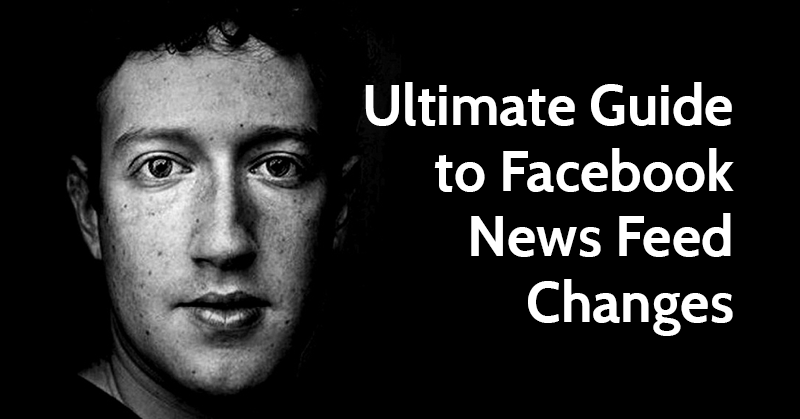
 The Facebook news feed changes... a lot!
The Facebook news feed changes... a lot!
Just when you think you have it all figured out, Facebook flips the script on marketers & updates the feed AGAIN.
This is especially true when it comes to the algorithm.
But wait... what the heck is the news feed algorithm?!
Basically, the algorithm selects the posts you see in the news feed based on the people and pages you interact with the most.
Simply put -- the algorithm controls what you see by tapping into content you've interacted with in the past.
For example, Facebook looks at:
- How often you interact with the friend, Page, or public figure (like an actor or journalist) who posted
- The number of likes, shares and comments a post receives from the world at large and from your friends in particular
- How much you have interacted with this type of post in the past
- Whether or not you and other people across Facebook are hiding or reporting a given post
So what does this mean to you and how does it impact your business page?
I've broken down all of the major algorithm changes that have occurred over the past 2 years.
There are many less significant updates that didn't make the list, but these are the biggies!
Read on for your ultimate guide to Facebook news feed changes and how to make the best of them!
>> Click to Tweet <<
The Ultimate Guide to Facebook News Feed Changes... and How They Impact YOU!
1. Facebook Explains Algorithm -- August 6, 2013
I think this was the first time Facebook ever discussed the news feed algorithm in public.
Here's the gist of the announcement:
- Facebook announces more transparency to users regarding the News Feed.
- Now old stories that you didn't scroll far enough down to see can show back up at the top of News Feed if the stories are still getting lots of Likes and Comments, this is referred to as 'Story Bumping'
- 'Last Actor' is a new phrase introduced that keeps track of the most recent person to interact with a post. Meaning if you interacted with a Post from Post Planner today you'll see more stories from the page.
- Facebook says you'll mainly see stories on the News Feed from the last 50 pages/people you interacted with.
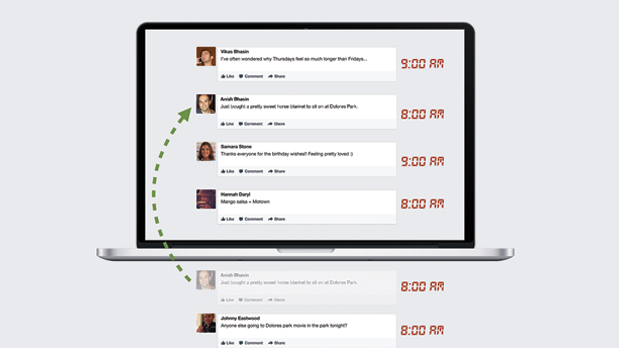
2. EdgeRank is Dead -- August 23, 2013
Showing More High Quality Content
A completely new News Feed algorithm is launched -- thus killing the old "Edgerank" algorithm.
The new algorithm tries to answer these common questions:
- Is this timely and relevant content?
- Is this content from a source you would trust?
- Would you share it with friends or recommend it to others?
- Is the content genuinely interesting to you or is it trying to game News Feed distribution? (e.g., asking for people to like the content)
- Would you call this a low quality post or meme?
- Would you complain about seeing this content in your News Feed?
What makes up the algorithm?
- Over 1000 different factors
- Frequency of content from a page reported as low quality
- How complete the Page profile is
- Whether the fan base for a Page overlaps with the fan base for a higher quality Page
Advice for Pages:
- Make your posts timely and relevant
- Build credibility and trust with your audience
- Ask yourself "Would people share this with their friends?"
- Think about "Would my audience want this in their News Feed?"
3. Show Me Better Ads -- September 27, 2013
More Relevant Ads in News Feed
- News Feed will learn what types of ads people want to see.
- Liking, Clicking, Commenting or Sharing an ad story results in seeing more of that type of ad
- Now if users report or hide ads they will see less of that type of ad moving forward.
- When deciding which ad to show to which groups of people, we are placing more emphasis on feedback we receive from people about ads, including how often people report or hide an ad.
- That means people should see ads that are increasingly relevant to them, and fewer ads that they might not be interested in.
For marketers, this means we are showing ads to the people who might want to see them the most. For example, if someone always hides ads for electronics, we will reduce the number of those types of ads that we show to them.
For page owners this means your ads should be shown to those most interested in your product, based on your ad targeting.
4. What's in the News -- December 2, 2013
Helping You Find More News to Talk About
Facebook reports that the average traffic from Facebook to media sites has increased by over 170% from the previous year.
We’ve noticed that people enjoy seeing articles on Facebook, and so we’re now paying closer attention to what makes for high quality content, and how often articles are clicked on from News Feed on mobile. What this means is that you may start to notice links to articles a little more often (particularly on mobile).
What does this mean?
- People prefer links to high quality articles rather than memes
- High quality articles will show up more on the News Feed
- Memes will be less prominent
- 'Related' articles will begin showing below links that you have clicked on
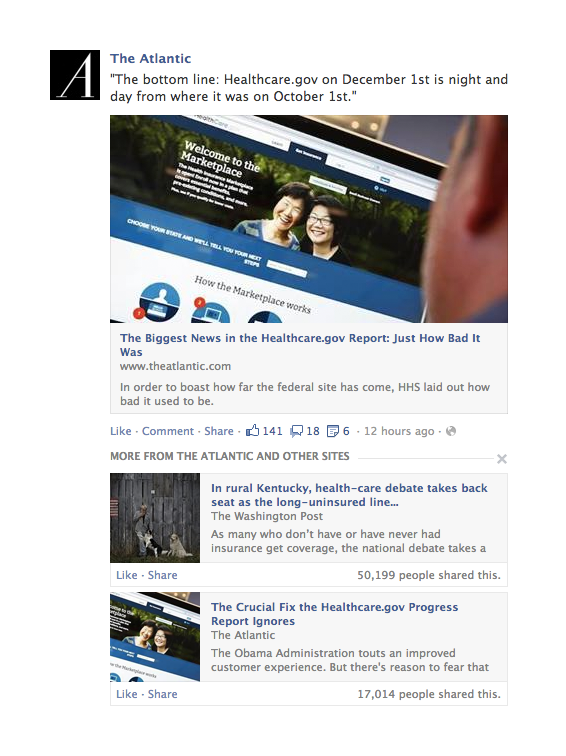
Facebook also updated "Story Bumping" to highlight stories with new comments. This change means stories will resurface to the top or the News Feed that have new comments from friends.
5. Status Updates from Friends -- January 21, 2014
What Happens When You See More Updates from Friends
- Facebook research shows that when users see text updates from friends they write updates themselves
- Facebook to begin showing more text updates from friends on the News Feed
- Research also showed text updates from pages did not result in users writing more updates
- Page posts that are text only will be shown less to users on the News Feed moving forward
- Distribution of link posts and photos from pages could see an increase in Reach
For pages this means they should stop posting links simply as text, as seen below:

Instead pages should post links with the full width preview and no link in the text part of the update:
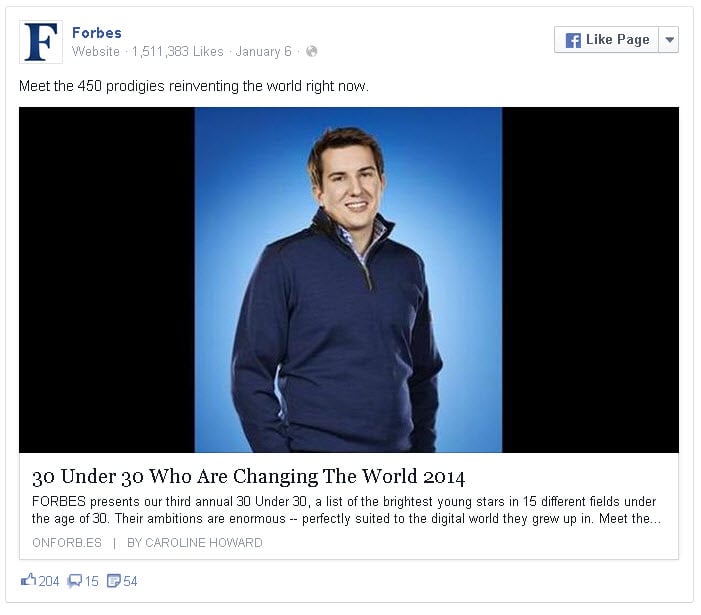
6. Trending Topics -- February 24, 2014
Showing Stories About Topics You Like
In January, we introduced Trending to help highlight the global conversations that happen on Facebook. Today, we’re adding a new way for people to discover conversations around topics they’ve expressed interest in.
Now, when a Page tags another Page, we may show the post to some of the people who like or follow the tagged Page.
This feature has been live for similar updates from friends, but is new to pages. Posts getting the most engagement are likely to be shown more. Facebook will also take into consideration if you Like both pages in question.
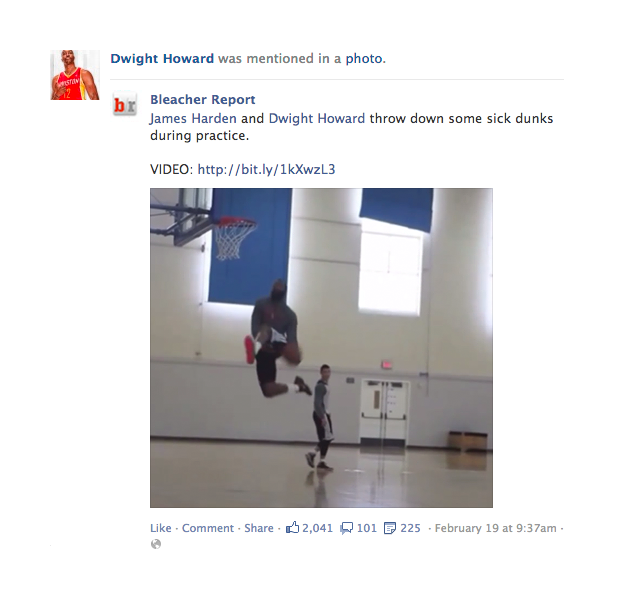
In the example above Bleacher Report mentions NBA player Dwight Howard. There is now a higher possibility that users who Like both pages will see this post. But in addition the post may be shown to users that only Like the Dwight Howard page.
7. Spammers Beware -- April 10, 2014
Cleaning Up News Feed Spam
This update may have caused the most backlash amongst Facebook page owners.
Up until this point most of the News Feed algorithm updates were based on engagement, not content.
The announcement made here is purely based on the content of posts from pages.
Today we are announcing a series of improvements to News Feed to reduce stories that people frequently tell us are spammy and that they don’t want to see. Many of these stories are published by Pages that deliberately try and game News Feed to get more distribution than they normally would. Our update targets three broad categories of this type of feed spam behavior.
Like-bait was the initial target.
'Like-baiting' is when a post explicitly asks News Feed readers to like, comment or share the post in order to get additional distribution beyond what the post would normally receive.
People often respond to posts asking them to take an action, and this means that these posts get shown to more people, and get shown higher up in News Feed. However, when we survey people and ask them to rate the quality of these stories, they report that like-baiting stories are, on average, 15% less relevant than other stories with a comparable number of likes, comments and shares. Over time, these stories lead to a less enjoyable experience of Facebook since they drown out content from friends and Pages that people really care about.
The improvement we are making today better detects these stories and helps ensure that they are not shown more prominently in News Feed than more relevant stories from friends and other Pages. This update will not impact Pages that are genuinely trying to encourage discussion among their fans, and focuses initially on Pages that frequently post explicitly asking for Likes, Comments and Shares.
Here's an example of Like-bait:
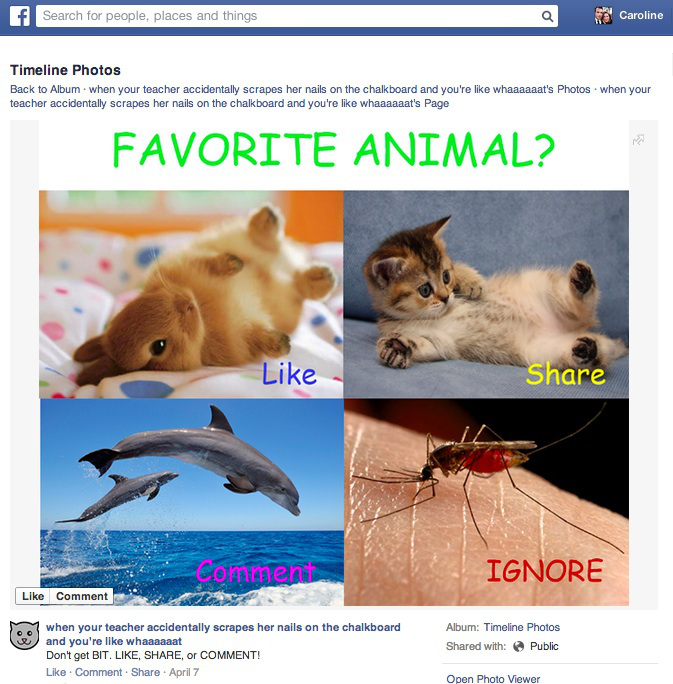
You've probably seen lots of Like-bait over the years. I know I was guilty of Like-baiting in the past.
Most Like-bait is not hidden from the news feed.
This algorithm change also targeted frequently circulated content.
People and Pages on Facebook frequently reshare great content, but people tell us there are occasionally instances where photos or videos are uploaded to Facebook over and over again. We’ve found that people tend to find these instances of repeated content less relevant, and are more likely to complain about the Pages that frequently post them. We are improving News Feed to de-emphasize these Pages, and our early testing shows that this change causes people to hide 10% fewer stories from Pages overall.
The problem I see here is just because someone saw a video or meme a year ago doesn't mean it's not new for your audience -- so why should Facebook punish that page for posting it?
The third target was spam.
Some stories in News Feed use inaccurate language or formatting to try and trick people into clicking through to a website that contains only ads or a combination of frequently circulated content and ads. For instance, often these stories claim to link to a photo album but instead take the viewer to a website with just ads.
By measuring how frequently people on Facebook who visit a link choose to like the original post or share that post with their friends, we’ve been able to better detect spammy links. The update we are making today improves News Feed to reduce cases of these spammy links, and in our early testing we’ve seen a 5% increase in people on Facebook clicking on links that take them off of Facebook – this is a big increase in the context of News Feed and is a good sign that people are finding the remaining content in their News Feed more relevant and trustworthy.
Nobody one likes spam. But it's very rare, even on our page, that people Like the original post with the link or share it. So I'm not a fan of this being a gauge as to what is considered "spam".
Will this affect your Page?
Maybe...
Facebook says the vast majority of pages are not posting feed spam so it shouldn't be a big deal. But those posting this type of content over and over will be hurt -- Upworthy is the best example of this.
8. There's an App for That -- May 27, 2014
Giving People More Control Over When They Share from Apps
A few years ago Facebook launched "frictionless sharing" for apps.
For example, whenever you played a song on Spotify, the activity would be share on your Timeline & news feed.
This annoyed many Facebook users.
We’ve found that stories people choose to explicitly share from third party apps are typically more interesting and get more engagement in News Feed than stories shared from third party apps without explicit action. We’ve also heard that people often feel surprised or confused by stories that are shared without taking an explicit action. In the coming months, we will continue to prioritize explicitly shared stories from apps in News Feed over implicitly shared stories.
This means people will see fewer implicit stories from third party apps in the future. However, people will continue to see interesting and relevant content from third party apps that their friends have explicitly chosen to share.
9. Videos Rule -- June 23, 2014
Showing Better Videos
Facebook research showed that people watched twice as many videos on Facebook compared to 6 months prior.
Today, we are announcing an improvement to how we rank the videos people and Pages are uploading directly to Facebook. Our goal is to better understand what videos people are interested in watching, so that relevant videos appear more prominently in News Feed.
The improvement we are making today considers whether someone has watched a video and for how long they watched it. We’re adding that to the factors we considered previously, which included likes, comments and shares.
The change affects only videos uploaded to Facebook, not link shares from YouTube, Vimeo & other websites.
This also helps us personalize News Feed based on people’s preference for watching video. People who tend to watch more video in News Feed should expect to see more videos near the top of their Feed. Conversely, people who tend to skip over videos without watching them should expect to see fewer videos.
In our early tests, this improvement resulted in more people watching more videos that are relevant to them.
Page owners should post more original videos.
10. Click-bait Ban -- August 25, 2014
This algorithm update was probably the most controversial of the past 12 months.
Today we’re announcing some improvements to News Feed to help people find the posts and links from publishers that are most interesting and relevant, and to continue to weed out stories that people frequently tell us are spammy and that they don’t want to see. We’re making two updates, the first to reduce click-baiting headlines, and the second to help people see links shared on Facebook in the best format.
Click-baiting is defined as :
...when a publisher posts a link with a headline that encourages people to click to see more, without telling them much information about what they will see.
Huh?! Isn't that one of the best ways to drive traffic to your website?
With the change, Facebook might have been trying to prevent people from leaving the social media website.
Posts like these tend to get a lot of clicks, which means that these posts get shown to more people, and get shown higher up in News Feed.
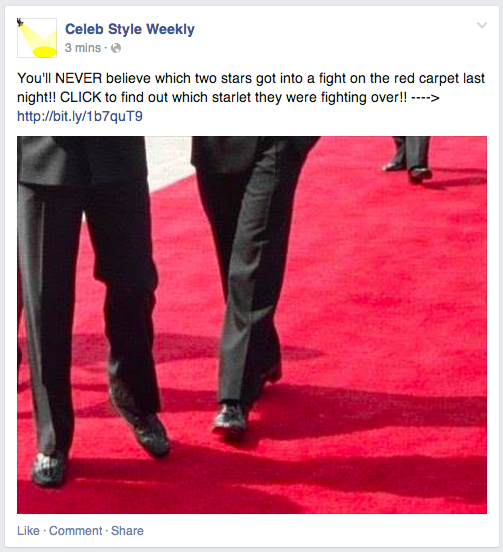
According to Facebook:
Over time, stories with “click-bait” headlines can drown out content from friends and Pages that people really care about.
So how do we determine what looks like click-bait?
One way is to look at how long people spend reading an article away from Facebook. If people click on an article and spend time reading it, it suggests they clicked through to something valuable. If they click through to a link and then come straight back to Facebook, it suggests that they didn’t find something that they wanted. With this update we will start taking into account whether people tend to spend time away from Facebook after clicking a link, or whether they tend to come straight back to News Feed when we rank stories with links in them.
Another factor we will use to try and show fewer of these types of stories is to look at the ratio of people clicking on the content compared to people discussing and sharing it with their friends. If a lot of people click on the link, but relatively few people click Like, or comment on the story when they return to Facebook, this also suggests that people didn’t click through to something that was valuable to them.
I hated this algorithm update -- and I bet you did too. The change seems to penalize shorter blog posts.
What time factor does Facebook use?
5 seconds? 10 seconds? One minute?
Nobody knows.
People often click links, visit a blog, Like the article & leave without reading the post. Now this activity might hurt a page.
Considering how often people Like, share & comment on a post is also problematic.
As a page manger, my goal is not to get engagement on a link post... I want traffic!
But Facebook is telling me that engagement on link posts is important. In fact, without it you might get penalized.
Maybe that's why bloggers like Chris Brogan & Copyblogger removed the comments section from their blog -- forcing those who want to engage with articles to comment on Facebook... hmmmm.
This update also discouraged the sharing of links in posts.
Facebook pushed pages to not just post a link as a status updates. These posts may not show up in the news feed of your fans:
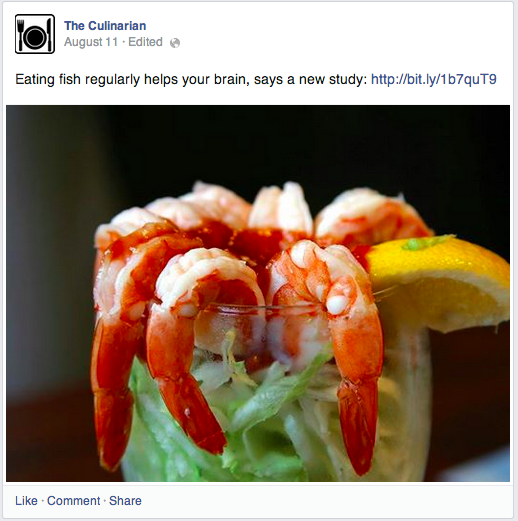
Instead, post links with full-width previews, which removes the link from the status update:
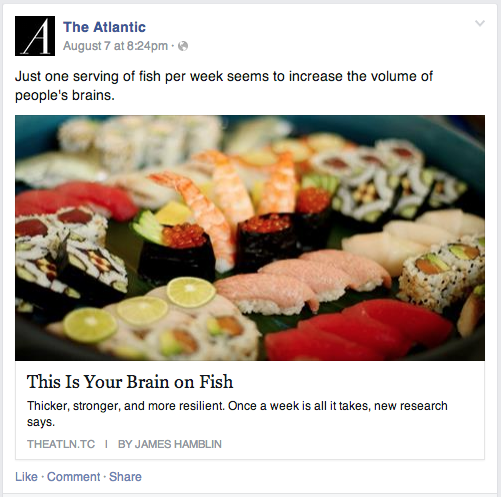
Facebook now gives top billing to link posts with a full preview.
11. Optimize the Advertising -- September 11, 2014
With more than 1.5 million advertisers on Facebook, showing users relevant ads is a daunting task!
So, today we’re announcing two updates to News Feed to help show people more relevant ads. For years, we have given people the choice to hide an ad so they no longer see it in their News Feed. We’ve also looked at these hides and used them as a signal that other people on Facebook might not want to see that ad. Now, we are going a step further by taking into account the specific reason they didn’t want to see that ad, and use that as a signal to inform whether or not we show the ad to other people. Second, we’re going to pay more attention to feedback from people who don’t often hide ads so that when they do give us feedback we take it as a stronger signal.
Remember, Facebook provides the ability to hide an ad right on the post:
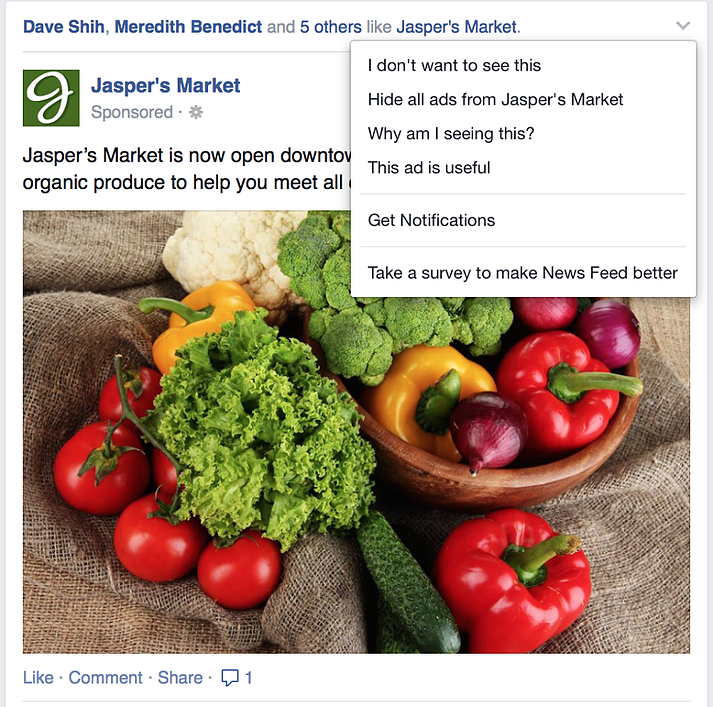
You'll then see this prompt when you click to hide a post:

Followed by this series of choices:
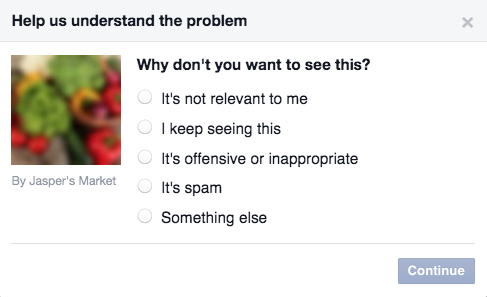
We’ve learned that the reason why someone hides an ad can be just as important as the hide itself. If someone doesn’t want to see an ad because it’s not relevant to them, we know we didn’t do a great job choosing that ad and we need to improve. If someone doesn’t want to see an ad because it’s offensive, it probably isn’t a good ad for other people on Facebook, either.
With this update, News Feed is going to take into account the reasons why people give us for hiding an ad. When we identify an ad like this, we’ll show it to fewer people on Facebook.
When testing this update, we looked at when people told us that ads were offensive or inappropriate and stopped showing those ads. As a result, we saw a significant decrease in the number of ads people reported as offensive or inappropriate. This means we were able to take signals from a small number of people on a small number of particularly bad ads to improve the ads everyone sees on Facebook.
Facebook considers how often users hide ads when determining how to regulate the news feed of others.
This update could make it so your ads are shown to those most interested in your product.
12. Trending Topics Take Over -- September 18, 2014
Trending topics are now a high priority in the news feed.
Our goal with News Feed is to show everyone the right content at the right time so they don’t miss the stories that are important to them. We’ve heard feedback that there are some instances where a post from a friend or a Page you are connected to is only interesting at a specific moment, for example when you are both watching the same sports game, or talking about the season premiere of a popular TV show. There are also times when a post that is a day or two old may not be relevant to you anymore. Our latest update to News Feed ranking looks at two new factors to determine if a story is more important in the moment than other types of updates.
One way we show timely content higher-up in News Feed is to show people stories about things that are trending as soon as they occur, so you can immediately know what your friends or favorite Pages are saying about the stories of the day. This means that when a friend or Page you are connected to posts about something that is currently a hot topic of conversation on Facebook, that post is more likely to appear higher up in News Feed, so you can see it sooner. Early testing of a small percentage of posts has shown that this update on average leads to a more than 6% increase in people engaging with these stories (e.g., more people share, comment, like or click).
With the release of the new iPhone 6 Plus, I saw lots of #bendgate posts at the top of the news feed.
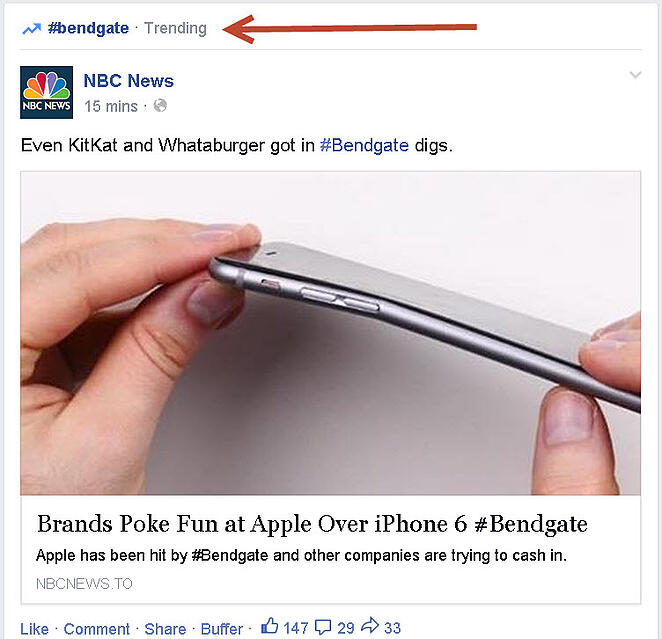
This update also changed how Facebook ranks the timing of when people engage with your posts.
Currently one of the signals we look at is the total number of likes that a post has received when determining how high up to to show it in News Feed. With this update, we are going to begin looking at when people are choosing to like, comment and share.
If people are engaging with the post right after it is posted, and not as much a few hours later, this suggests that the post was most interesting at the time it was posted, but potentially less interesting at a later date. Based on this signal it is more likely to appear higher in News Feed earlier on and lower at a later date.
We are also going to start taking this signal into account when considering which stories we bump in News Feed. Bumping is when we resurface stories that people did not scroll down far enough to see but are still getting lots of engagement. This is one more way that we’re working to identify timely posts so we can show them nearer the top of your News Feed sooner.
This change probably won't impact your page too much. Though, if you post about stories that are trending in the news, your followers may see more of your content.
But don't post about trending topics unless it's relevant to your Facebook page.
I wouldn't post about Bendgate on a page I manage for a church. In the long run, trying to artificially game the news feed algorithm will only hurt your page.
13. Reducing Overly Promotional Page Posts in News Feed -- November 14, 2014
According to a survey Facebook administered to users they concluded the following:
- Posts that solely push people to buy a product or install an app
- Posts that push people to enter promotions and sweepstakes with no real context
- Posts that reuse the exact same content from ads
Facebook gives this as an example:
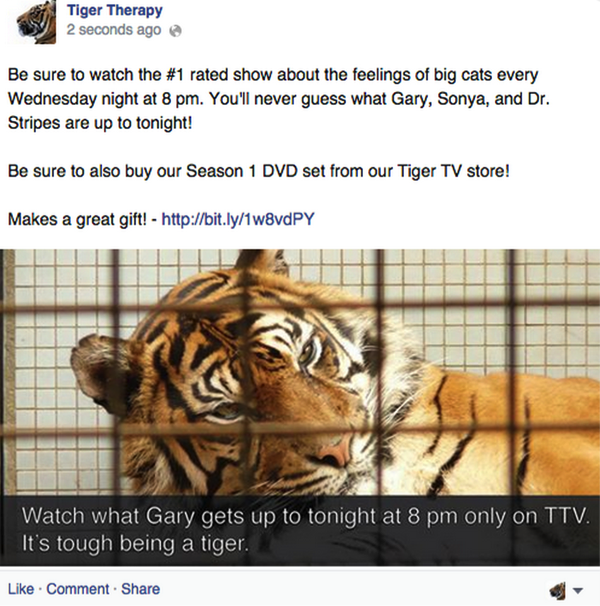
Basically Facebook will be showing posts that are images with links in the text to less users -- especially shortlinks.
All of this means that Pages that post promotional creative should expect their organic distribution to fall significantly over time.
While Pages that post a lot of the content we mention above will see a significant decrease in distribution, the majority of Pages will not be impacted by this change.
So make sure you're posting images without links in the text.
14. Showing Fewer Hoaxes -- January 20, 2015
Are you sick of all the hoaxes you see people post on Facebook?
The hoaxes Facebook is talking about are posts like this one below that end up being fake information purely to get people to click the link:
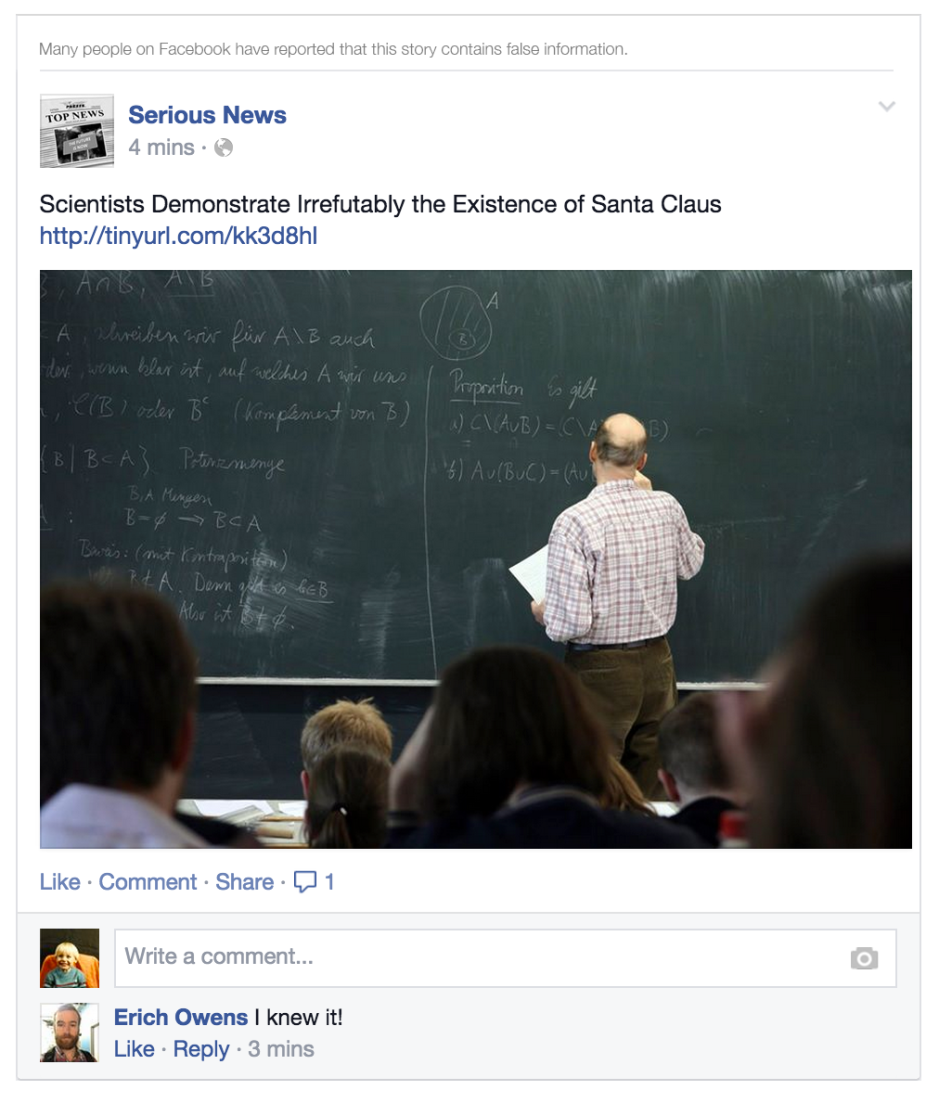
You'll notice the warning above the post that tells you others have reported it as containing false information -- which is part of the new change.
Facebook won't remove the post, but will instead give users this warning message.
The vast majority of publishers on Facebook will not be impacted by this update. A small set of publishers who are frequently posting hoaxes and scams will see their distribution decrease.
15. Balancing Content from Friends and Pages -- April 21, 2015
Facebook's goal with the News Feed is to show you stuff you care about.
This means we need to give you the right mix of updates from friends and public figures, publishers, businesses and community organizations you are connected to. This balance is different for everyone depending on what people are most interested in learning about every day. As more people and pages are sharing more content, we need to keep improving News Feed to get this balance right.
What are the updates?
- Users may now see multiple posts from the same person or page, this especially applies to those with fewer friends and that have Liked less pages. You'll never run out of content according to Facebook.
- Posts from friends you care most about (meaning you engage with them more) will show towards the top of the News Feed so you don't miss out on these posts while away from Facebook. (You mean people log out of Facebook??)
- Users will see less posts from friends when they simply "Like" or "Comment" on posts.
These updates won't hurt most Pages -- except for no longer showing posts in the feeds of friends when they comment on your posts.
Where We Go From Here
Staying abreast of all these news feed changes can create headaches -- especially if you're a small business owner with limited resources.
 You must buy Facebook ads to build a robust page.
You must buy Facebook ads to build a robust page.
And focus on posting timely, relevant content that your fans would love to consume.
Artificially gaming the news feed will make it difficult to pivot when the Facebook algorithm changes again.
The Facebook News Feed will continue to change month after month -- that's part of life.
But as a Page owner you need to keep these changes in mind and adjust your posts to get the most Reach out of them.
Good luck!
____________________
RECOMMENDED ARTICLES:
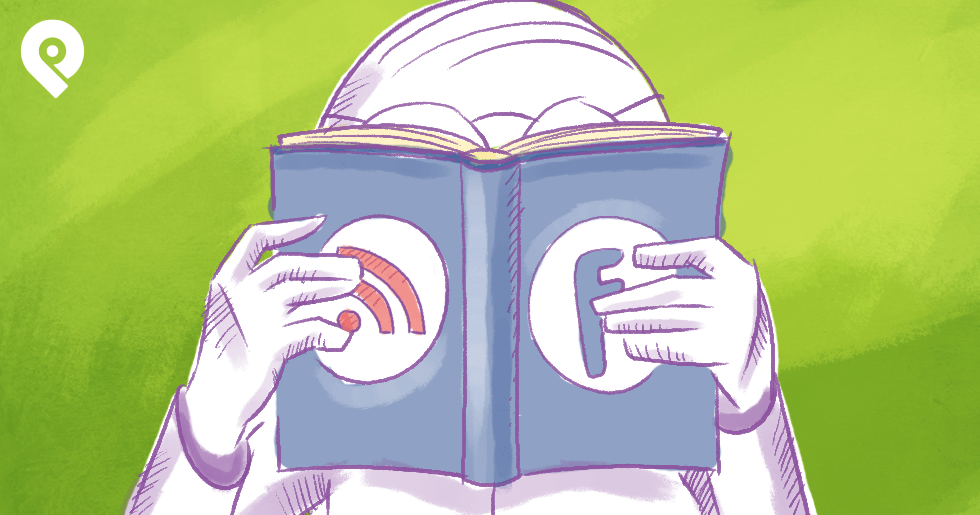
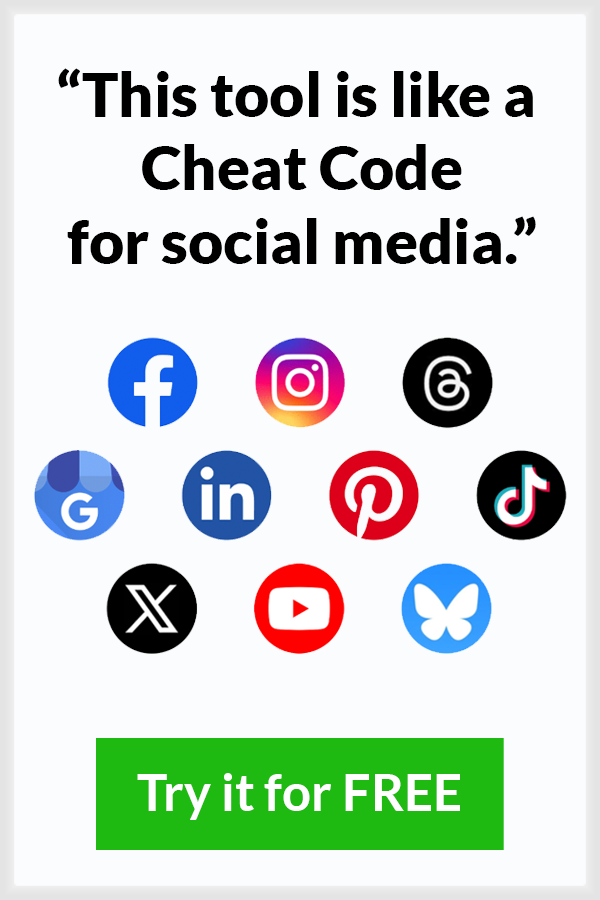





No Comments